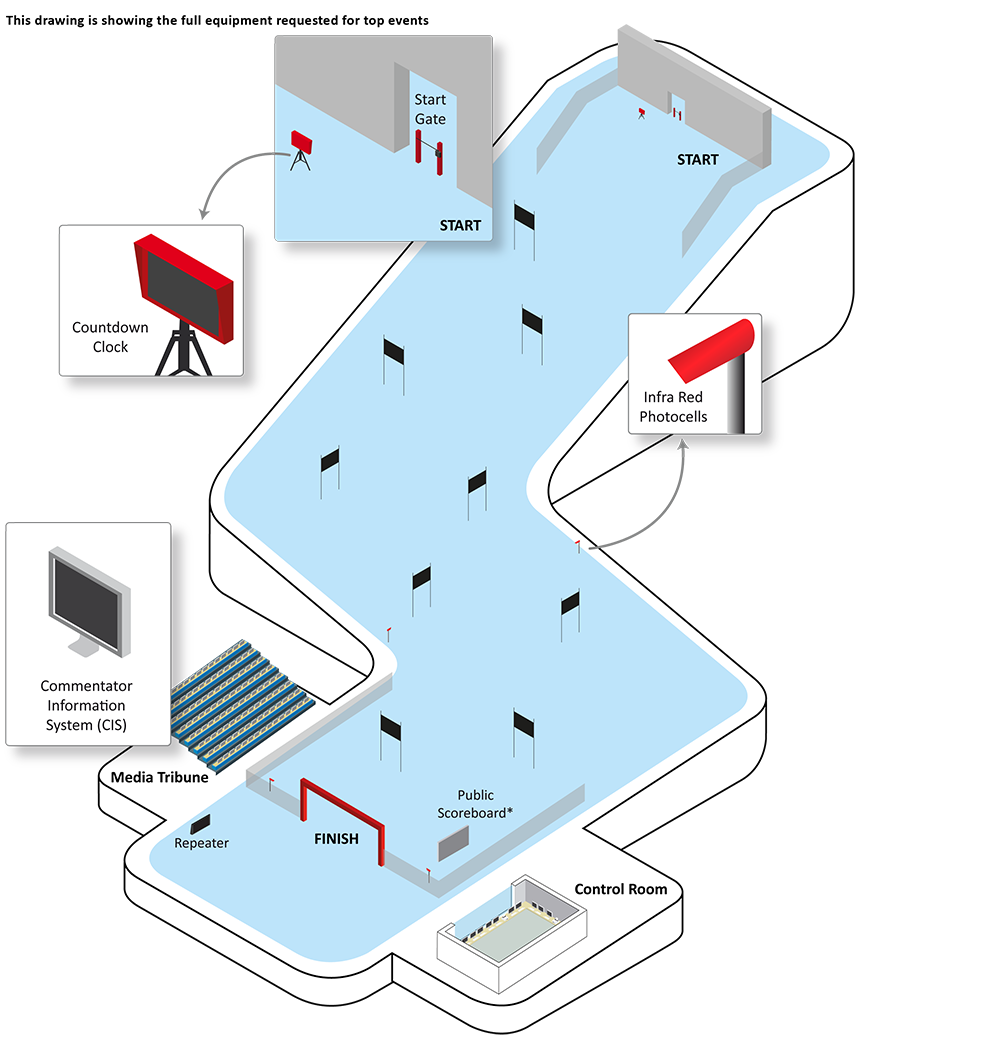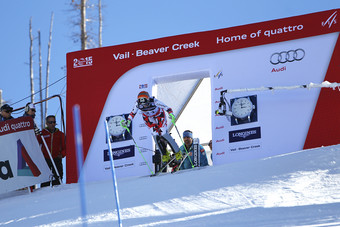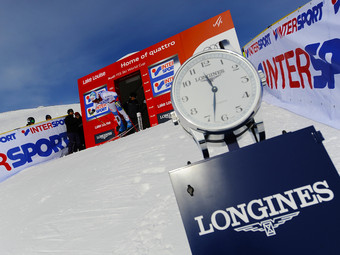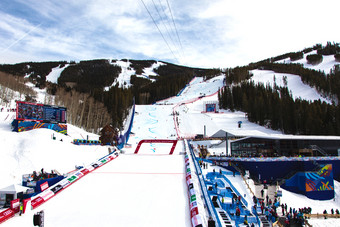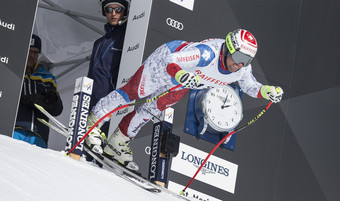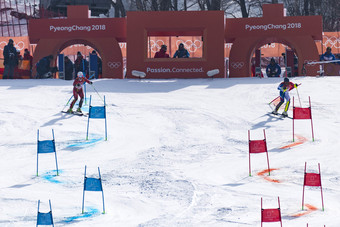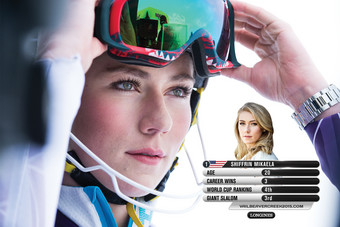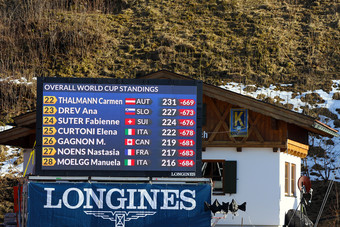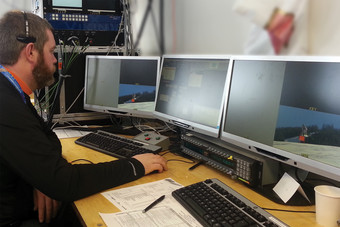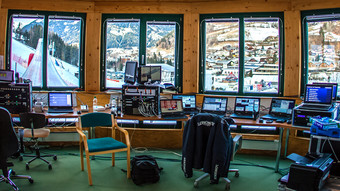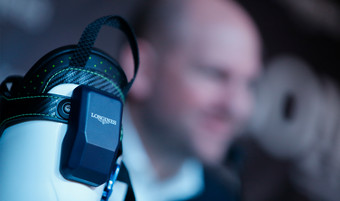Alpine skiing
Competitive alpine skiing has a long history and its competitions are among the most avidly followed of all the winter sports. It includes six disciplines: downhill, super-G, slalom, giant slalom, alpine-combined and parallel event, and Swiss Timing brings its timekeeping expertise to each of them.
Swiss Timing and Alpine Skiing
The speed and drama that makes alpine skiing events so popular also makes them particularly challenging for the Swiss Timing team. Athletes can reach speeds in excess of 130 kilometres per hour as they travel down a vertical drop that ranges from 180 metres (slalom) to 1,100 metres (downhill) for men and 140 metres (slalom) to 800 metres (downhill) for women. Skiers also have to pass through a series of gates, and if they miss it they have to climb back up and go through the gate in order avoid being disqualified.
Alpine skiers start their runs through a starting gate whose technology ensures that the starting pulse is generated when the wand (or ‘bar’) is at precisely the same angle for every competitor. The control box for the device includes both a main and backup system. Skiers have a ten-second starting window and can begin up to five seconds before or after the official start time. If they are within this time frame, timekeeping will start automatically when they burst through the gate. If they’re not, they’re disqualified.
Scope of Swiss Timing services
The disciplines in alpine skiing require advanced timekeeping and data handling technologies and services, and Swiss Timing is perfectly equipped to deal with all of them. For additional information about any of these, visit the links below.
- Timing
- Public & specific scoreboards
- On-venue results (OVR)
- Commentator information system (CIS)
- TV graphics
- Virtual graphics
Services for Alpine Skiing
